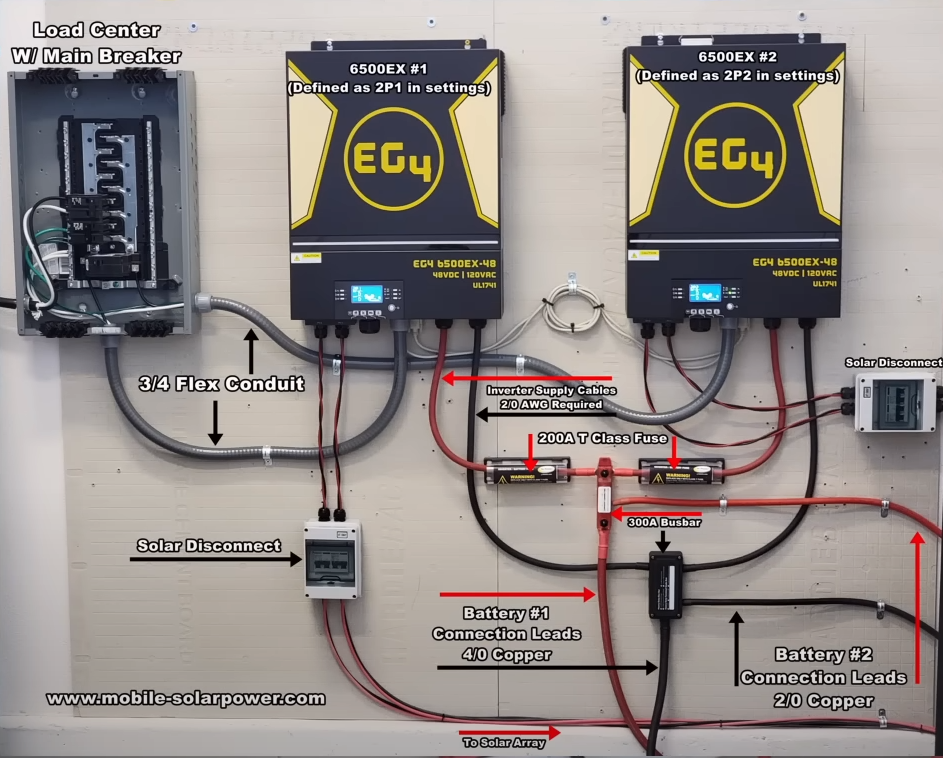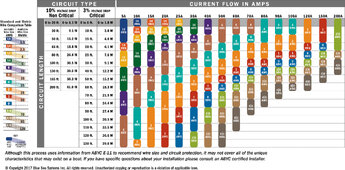AtomicLowe
New Member
From Will's (exceedingly helpful) video and related materials I'm observing:
4/0 Cu from Rack =>
300A Busbar =>
200A T-Class Fuse =>
2/0 Cu Inverter Supply (Noted as "required")
I'm totally new at this, but I can't lurk my way to understanding so...
1) Given the fuse amperage at 200A, is the 300A busbar overfit?
2) Given the 2/0 Cu Inverter Supply, is the 4/0 Cu from Rack to busbar overfit, or is this to accommodate drop due to the run length?
3) Is the 2/0 Cu Inverter Supply required because that's what fits, or required to accommodate current?
Despite my questions, I'm not disagreeing with anything. I'm not qualified to.
I'm just trying to gain a functional understanding.

4/0 Cu from Rack =>
300A Busbar =>
200A T-Class Fuse =>
2/0 Cu Inverter Supply (Noted as "required")
I'm totally new at this, but I can't lurk my way to understanding so...
1) Given the fuse amperage at 200A, is the 300A busbar overfit?
2) Given the 2/0 Cu Inverter Supply, is the 4/0 Cu from Rack to busbar overfit, or is this to accommodate drop due to the run length?
3) Is the 2/0 Cu Inverter Supply required because that's what fits, or required to accommodate current?
Despite my questions, I'm not disagreeing with anything. I'm not qualified to.
I'm just trying to gain a functional understanding.



